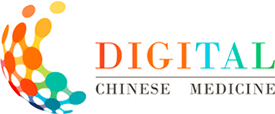Abstract:
Objective To evaluate the effectiveness and safety of the tonifying spleen and reinforcing Qi (TSRQ) therapy combined with thyroid hormone replacement therapy (THRT) for treating Hashimoto’s hypothyroidism.
Methods From database foundation to January 14, 2025, PubMed, Web of Science, Cochrane, Embase, China National Knowledge Infrastructure (CNKI), Wanfang Data, China Science and Technology Journal Database (VIP), and China Biomedical Literature Database (CBM) were searched for relevant information. Randomized clinical trials (RCTs) evaluating the efficacy and safety of TSRQ therapy combined with THRT for Hashimoto’s hypothyroidism were eligible for inclusion. Following quality assessment, data were analyzed using Stata 15.1 to conduct a meta-analysis and systematic review. Subgroup analysis was used to identify the sources of heterogeneity. The Grading of Recommendations Assessment, Development and Evaluation (GRADE) system was adopted to evaluate the certainty of the evidence.
Results This study included 30 RCTs, comprising 2 687 patients with Hashimoto’s hypothyroidism. Overall methodological quality was acceptable, with no studies exhibiting a high risk of bias. Meta-analysis demonstrated that TSRQ therapy combined with THRT significantly enhanced serum free triiodothyronine (fT3) levels standardized mean difference (SMD) = 0.76, 95% confidence interval (CI): 0.57 to 0.94, P < 0.001 and free thyroxine (fT4) levels (SMD = 0.86, 95% CI: 0.61 to 1.11, P < 0.001), while reducing thyroid-stimulating hormone (TSH) levels (SMD = – 0.99, 95% CI: – 1.20 to – 0.78, P < 0.001) compared with THRT alone. Furthermore, the combination therapy significantly decreased anti-thyroid peroxidase antibody (TPOAb) levels (SMD = – 1.46, 95% CI: – 1.79 to – 1.13, P < 0.001) and anti-thyroglobulin antibody (TgAb) levels (SMD = – 1.46, 95% CI: – 1.80 to – 1.11, P < 0.001). TSRQ therapy did not adversely impact the safety profile of THRT. However, while some sources of heterogeneity have been identified (e.g., specific detection methodologies, I² = 0.0%, P = 0.938), there remains a portion of unexplained heterogeneity (e.g., publication year, I² = 93.4%, P < 0.001), which has undermined confidence in these pooled estimates. The evidence ratings for fT3, fT4, and TSH were limited, and those for TPOAb and TgAb were even more limited.
Conclusion TSRQ therapy combined with THRT may strengthen thyroid function and modulate immune dysregulation in patients with Hashimoto’s hypothyroidism without increasing adverse event incidence.









 下载:
下载: